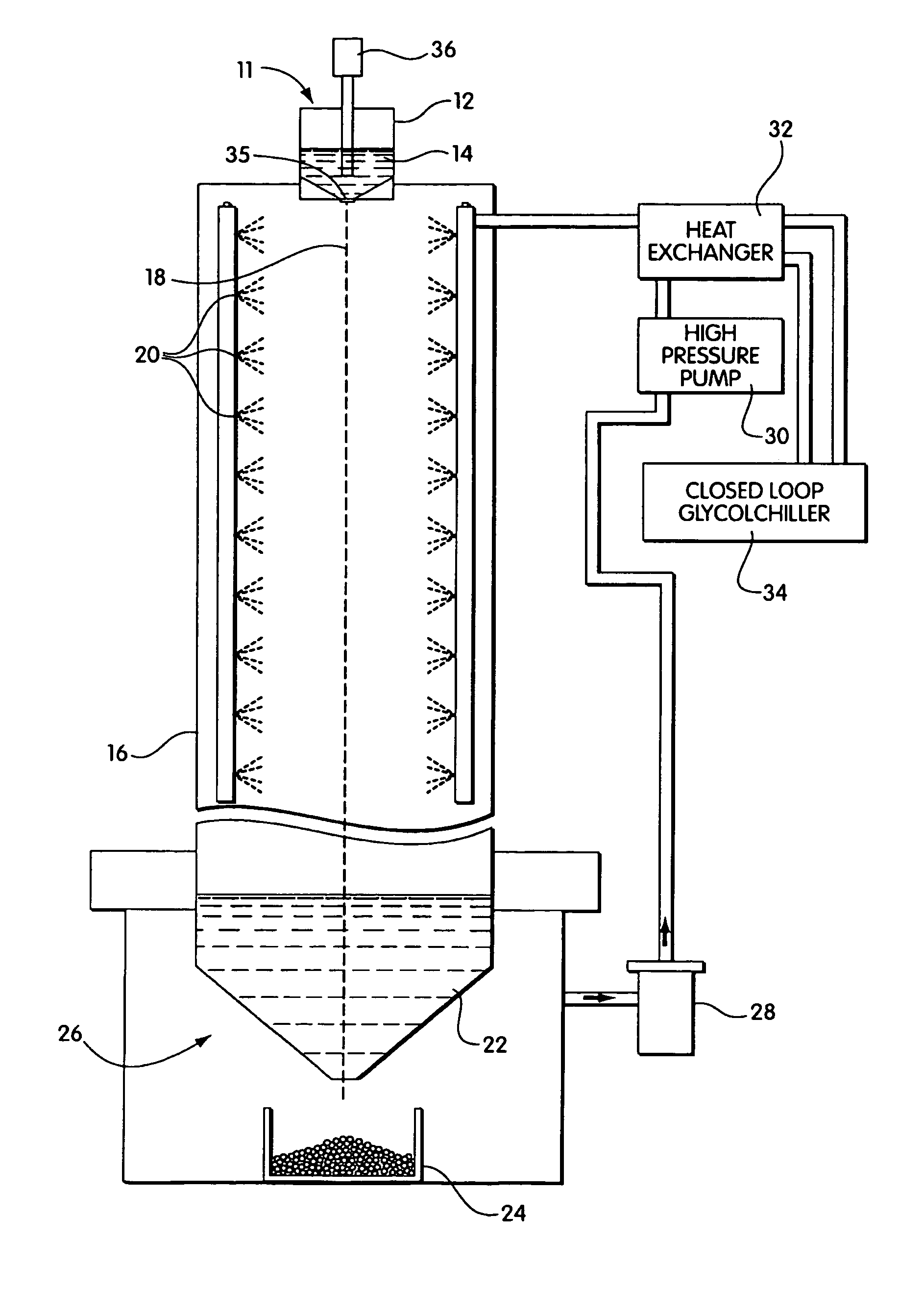Rapid surface cooling of solder droplets by flash evaporation
a technology of flash evaporation and surface cooling, which is applied in the direction of welding/cutting media/materials, welding apparatus, welding/cutting media, etc., can solve the problems of metallurgical phases segregation, easy damage, and limited ability of nitrogen gas to cool solder spheres quickly enough to form desired surface finishes
- Summary
- Abstract
- Description
- Claims
- Application Information
AI Technical Summary
Benefits of technology
Problems solved by technology
Method used
Image
Examples
Embodiment Construction
[0013]The invention provides an apparatus and a method for rapidly cooling molten metal droplets for use in conjunction with one of a number of stream-jetting manufacturing techniques used in the production of metallic powders, particles, granules and spheres. More particularly, solder melt can be rapidly cooled with this method and apparatus to produce solder alloy powders and solder spheres.
[0014]One embodiment of an apparatus for forming solid metal balls or particles, particularly solder balls, in accordance with the methods described herein is illustrated in the FIGURE. The apparatus includes a stream jet 11 including a jetting cartridge 12 filled with molten solder 14 at one end of an enclosure 16 (e.g., a flexible polyethylene tube). Molten solder droplets 18 are emitted in a stream from the cartridge 12 through the enclosure 16 with spray nozzles 20 positioned within the enclosure 16 to spray a mist of a liquid coolant into the path of the molten solder droplets 18. The liqu...
PUM
| Property | Measurement | Unit |
|---|---|---|
| diameters | aaaaa | aaaaa |
| pressure | aaaaa | aaaaa |
| pressure | aaaaa | aaaaa |
Abstract
Description
Claims
Application Information
 Login to View More
Login to View More - R&D
- Intellectual Property
- Life Sciences
- Materials
- Tech Scout
- Unparalleled Data Quality
- Higher Quality Content
- 60% Fewer Hallucinations
Browse by: Latest US Patents, China's latest patents, Technical Efficacy Thesaurus, Application Domain, Technology Topic, Popular Technical Reports.
© 2025 PatSnap. All rights reserved.Legal|Privacy policy|Modern Slavery Act Transparency Statement|Sitemap|About US| Contact US: help@patsnap.com


